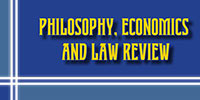Tudorică ALIN-ANDREI
Police Commissioner, Police instructor, Chair of Judicial Training and Criminology («Vasile Lascăr» Police Agents School Câmpina), Romania
campina@scoalapolitie.ro
UDC 326.4 (061.1EU) - 049.5
DOI 10.31733/2786-491X-2021-134-139
Keywords: crime, crime prevention, modern models of criminal prevention
Abstract. We are passing through a period of time in which the big known social scourges – corruption, poverty, unemployment, drugs, and alcoholism – are completed by terrorism, organized crime, deterioration of urban environment, as well as subtle factors such as abuse, discrimination, absence of control, advocacy of violence through media. All of these factors are complemented, naturally, with particular ones for every country or region, thus amplifying social vulnerability and criminal costs. The groups which suffer the most due to high criminality rate remain always the same: the young, the elderly, women, single persons, people who live in the suburbs. Although immediate risks seem urgent, lasting improvement appear only when indirect factors are approached: poverty, illiteracy, unemployment, lack of perspective etc. Therefore, preventing crime becomes imperative for this period of time, in which the main objectives are social order, consolidation of mechanisms used to respect and apply the law, education and solidarity of the public.
Consequently, preventing crime as a social and antisocial phenomenon, which accompanies every form of organization of human existence has constituted to this day a challenge for theoreticians and practitioners of criminal sciences worldwide. Limiting to a certain extent the effects of this manifestation, characteristic of the human behavior and reducing them to a certain degree of endurance, has always represented a major preoccupation of the state, regardless of its nature. Naturally, prevention is part of the forms of reaction of society towards criminality and definitely constitutes the final, yet optimal, means of answer society must give to this species of human behavior.
References
- Answer to violence 1. (1977). Presses Pocket. (in French).
- Chipăilă, I. (2009). General Criminology. Sitech Publishing House.
- Clioclei, V. (2009) Critics of criminal reason. Studies of judicial criminology and criminal law. C.H Beck Publishing House.
- Gassin, R. (1998). Criminology. Dalloz. (in French).
- Muțiu, F. (2014). Olimpia, https://drept.uvt.ro/wp-content/umploades/2014/07/conf.-univ.-dr.-florentina-olimpia-mutiu.pdf [in Romanian].
